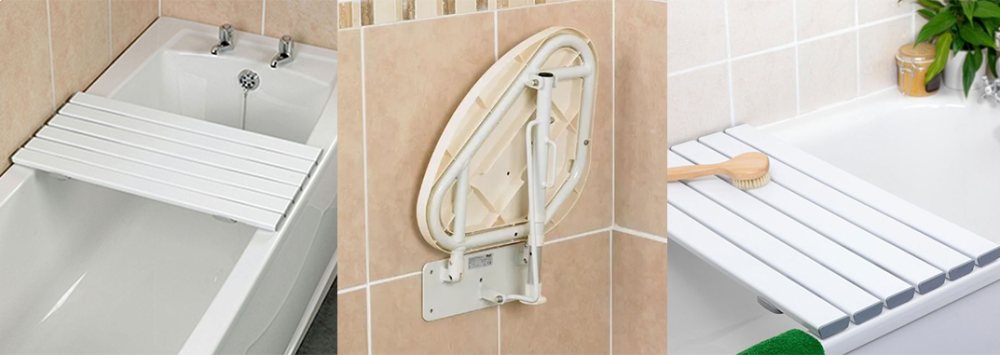
Seniors and Independence - What Needs to be in Place
Sally Madeley-Carr, OT26 Apr 2022
Ageing happens and it can bring with it a reduced level of independence, as parts of the body do indeed begin to show and feel their age. Caring for oneself may become slower, more difficult and, possibly with failing eyesight, hard to handle.
Quality of life is important to us all. If a senior person has reached the stage of needing support in their own home, there will be several factors to address to maintain safety, health, hygiene and happiness.
Constant reviews on how the individual is managing will be needed, as ageing will continue to reduce physical ability and may also affect mental awareness and thinking.
Foremost, it must always be remembered that human beings are indeed individuals and will have their own ideas, choices and routines.
It is so easy to rush in and get jobs done and dusted, without giving personal attention and interaction with that senior. 'Knowing' what this person is all about is the starting point to a successful relationship.
Some of the main areas to address for seniors living independently include safety, eating, mobility, toileting, hygiene and happiness. When all are in place, the individual will feel healthier and happier.
Safety
Homes we raise our families in aren't always suitable to life in later years. For your senior, check if:
- the senior can still manage two floors, or to comfortably get around their one storey home
- access to a toilet is easy
- lighting is suitable throughout the house
- cooking facilities are within your senior's range of abilities
- the individual can easily access bathing facilities.
Eating
Eating sensibly must not be overlooked.
- Diet
As once busy households reduce in size, ageing parents may then find it a chore to prepare full meals. Particularly for the senior who lives alone, cooking fresh food may be pushed to one side and eating sandwiches or tinned foods may become the new norm.
Part of the caring process will involve making sure that the senior is on a balanced diet (protein being important in later stages of life) and that they drink enough to stay hydrated.
- Self-Feeding
Illness and disability can make eating an uncomfortable task, particularly if the individual has unsteady hands. Forgetfulness may also mean the senior forgets to eat.
The carer will need to know what is happening for the senior in their care. For example:
- can the individual prepare their own food
- does the individual need help with bringing food to their mouth
- will special equipment help the person with self-feeding.
Special equipment in the form of cutlery with weighted handles (to reduce shakiness) or Velcro straps (to maintain grip), adapted plates and two-handled cups, are some of the items which help maintain a level of independence.
Mobility
Later years can lead to unsteady balance and a weakened frame, as well as aching joints, making walking a painful, and maybe worrying, task. Depending on what mobility aids your senior is using, accessing all parts of the home may sometimes need a rethink.
- Walking Cane
A walking cane tends to be used when support is needed to only one side of the body but may also be used as something to rest on when making short trips from one room to another. Using a walking cane shouldn't create any need to make alterations to aid getting around, as the cane takes up only a little more space / width than the person him-/herself.
- Walking Frame
A walking frame is held in front of the user and lifted forward maybe twelve inches (30 cm) or so, with the user then stepping towards the frame, before moving the frame forward again to take the next step. Though held in front of the person, a slight re-adjustment of furniture might still make it easier to get around.
- Wheelchair
A wheelchair is needed by the individual who can't walk, maybe due to accident or illness (e.g. multiple sclerosis (MS). Using a wheelchair will mean making an assessment of the whole home, as space will be needed not only to move around in the wheelchair but also to turn. Aisles and doorframes will need to be wider and there is every possibility that moving into more suitable accommodation will prove the cheaper, though not necessarily preferred, option.
- A Food Trolley
Whilst a food trolley is not a mobility support aid, for moving prepared meals from the kitchen to the table or living room, a trolley helps steady the food and allows the senior to have two hands available for pushing the trolley, which can give something firm to hold onto whilst walking.
Toileting
The main point to consider here is that the toilet is easily accessible.
- Toilet Height
An ageing body may mean that the individual can no longer lower him-/herself down to the toilet height, or get back up after use.
The average toilet has a height of 17 inches (42.5 cms.), though it is possible to purchase toilets with a height of 20 inches (50 cms.) and 21 (52.5 cms.) inches. The extra height makes it more manageable for the user to lower him-/herself and also get back into a standing position.
Height can also be increased by purchasing a toilet booster seat, which gives an extra four inches (10 cms.) of height and again makes sitting and standing a little easier.
Make sure a grab rail is at hand, to aid the user in sitting and standing from the toileting position.
- Incontinence
Urinary Incontinence can sometimes happen in later years and, should the individual need extra time to reach the toilet, incontinence products may be the answer.
Incontinence products include incontinence pads, incontinence pants (also called adult pull-ups) and other products.
Mattress protection comes in the form of full mattress covers and waterproof bed pads, the latter making it easier to change the bed quickly, should an accident occur during the night.
Protection can also be purchased for seats and chairs, in the form of washable cushioning, keeping the seat free from stains or odour.
Protective covers can also be bought for car seats, giving the senior peace of mind when travelling.
Hygiene
Hygiene is important to health, wellbeing and self-esteem. Arthritis, a weakened frame, unsteadiness and some illnesses may make getting into a bath unaided a somewhat dangerous task.
- Bath
To aid getting into and out of a bath comfortably, a bath board is a board which bridges the width of the bath and allows the user to sit down on the board, before twisting to get one's legs into the bath water. For added safety, buy a bath board which can be locked onto the bath itself.
A bath board is more suited to individuals who still have sufficient upper body strength to manoeuvre themselves into, and out of, the bath water.
Having a grab rail attached to the wall inside the bath space and on the wall just outside the bath, will again give added safety to the user who wishes to enjoy one's ablutions independently.
Once the user's feet are outside the bath and firmly on the floor, the individual can remain seated there to dry oneself.
Always have a bath mat inside the bath to prevent slipping and one outside the bath for the same reason.
- Shower
A bath board can also act as a shower board, allowing the user to be seated on the board whilst showering.
When sitting on a shower board, think about placing a grab rail close at hand, to give peace of mind to the user who is showering independently. Better still, shop for a board which comes with a grab handle attached.
A mounted, folding shower seat can fold up against the shower wall when not in use and so won't cause issues for other people who prefer to stand when showering.
For more comfort and more safety, a folding shower seat can also come with a back-rest and armrests.
Folding shower seats also come with two legs and can take weights of up to 18 stone (115 kgs.).
Happiness
Some may say happiness is the most important factor of all.
Leaving one's own home to live in a more appropriate accommodation, or to enter into a care home, takes the individual from practiced comfort and places them into a new and 'foreign' environment. Happiness disappears and the individual has to make do and mend with his / her changed circumstances and lifestyle.
Happiness involves socialising, still being needed, having interests and keeping active.
Any movement or physical activity will keep the body more supple, prevent or delay the onset of pain and keep your senior healthier and happier for longer.
Summary
For the ageing person who wants to continue living in their own home, it may be necessary to assess whether their home still matches their needs.
A carer needs to look at the main factors of a safe and fruitful future, including safety, eating, mobility, toileting, hygiene and happiness.
Changes in levels of mobility may mean that a walking aid will be needed to support the senior's independent lifestyle.
Remember that, for the ageing person, dexterity and mobility might make getting to the toilet a slower task.
Social interaction and still being needed are important factors in maintaining a healthy lifestyle.

Sally Madeley-Carr, OT
Sally qualified as an Occupational Therapist in 1996 and is a well-respected professional in the field of rehabilitation equipment and living aids. She has worked in private practice and within the NHS, developing a broad experience with adults and children. Click here for Sally's registration with the Health and Care Professions Council. The HCPC regulates health, psychological and social work professionals in the UK.